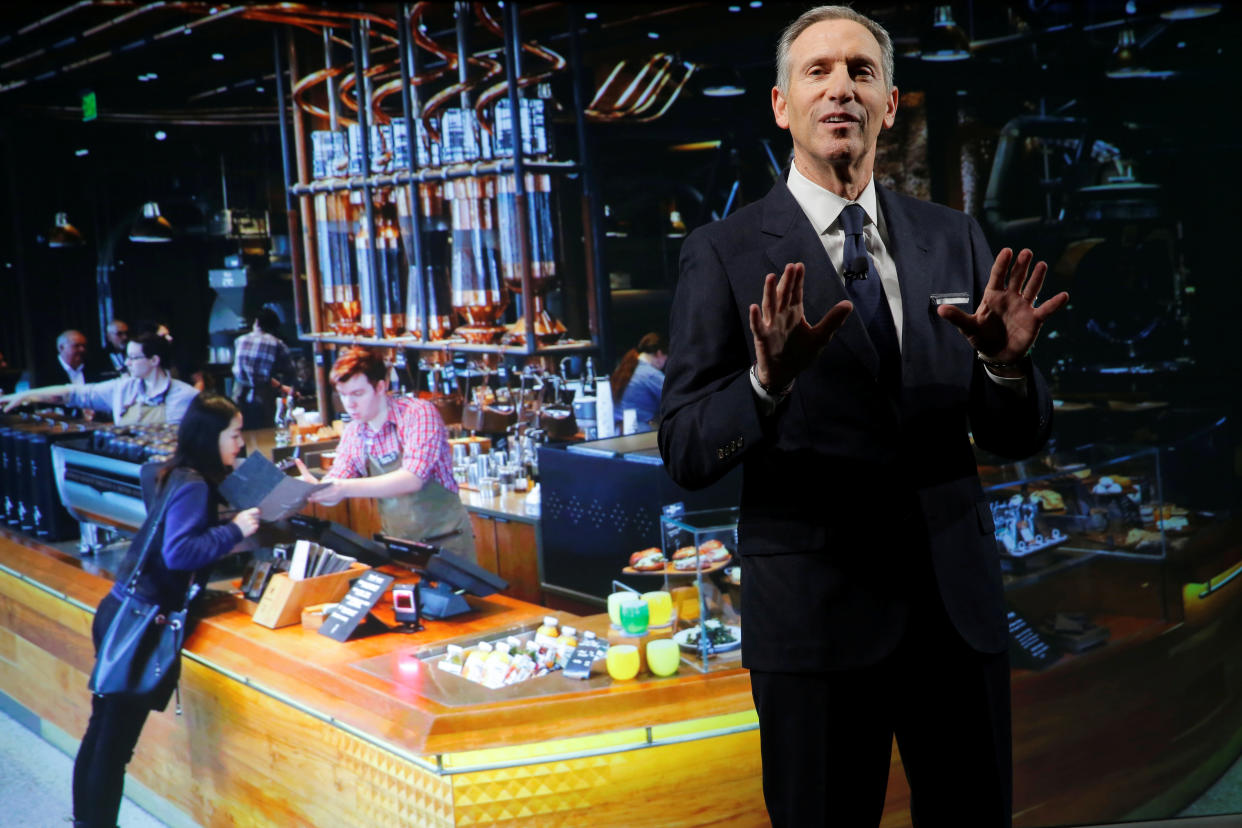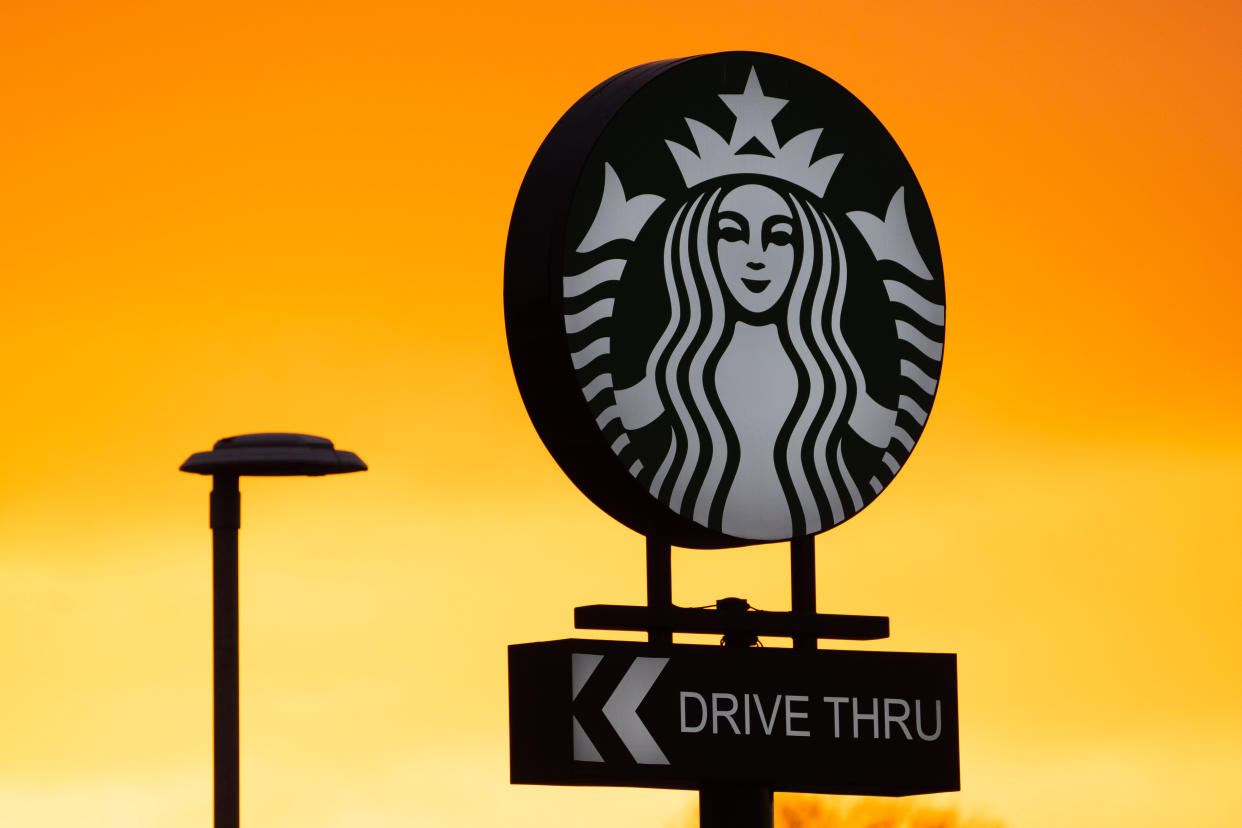Starbucks CEO Howard Schultz presents a new vision 'to literally catch up'
While three-time Starbucks (SBUX) CEO Howard Schultz has been putting his foot in his mouth during the first round of global employee listening tours since returning to lead the company on an interim basis last month, he has apparently had some time to reimagine the store of the future.
Gone is Schultz' "third place" vision — when you spent five hours inside of a Starbucks scrubbing free WiFi and nursing an iced coffee so as to not get kicked out by the store manager — that he has championed for decades. With the pandemic changing consumer buying and mobility patterns extensively, Schultz has acknowledged Starbucks must roll with the times.

The grand vision: New Starbucks locations outfitted with drive-thrus and better fast-food equipment that could help churn out drinks quicker because more throughput often equals more money and higher returns. So think McDonald's (MCD) strengths. At the same time, the idea goes, these Starbucks stores would produce higher-quality food — a strength of Starbucks in the fast-food space.
"In our stores customers are increasingly further customizing already complex handcrafted cold beverages," Schultz said on an earnings call Tuesday evening. "The combination of shifts in customer patterns, accelerating demand and algorithms built for different customer behaviors, has placed tremendous strain on our U.S. store partners. Ordinarily, we would have anticipated and invested ahead of the shifts we're seeing, but COVID disruptions interfered with our ability to make the required investments in store design, operations, infrastructure, and technology. Going forward, we will be making investments in our partners in business to literally catch up on investments we have not made. And make further investments to position the company ahead of the coming growth curve. We will also be accelerating our new store growth with 90% of new stores being high returning drive-thrus. Our newest class of drive-thrus will integrate new store designs, technology, including more handheld devices and equipment improvements, that will increase efficiency [and] speed of service."

The company's latest quarter underscores the need for the coffee giant to evolve.
Operating profit margins fell in all of Starbucks' business segments, led by a 520 basis point year-on-year drop internationally. Sales overseas were severely pressured by a 23% same-store sales plunge in China amid increased coronavirus-related lockdowns.
Here is how Starbucks performed in its fiscal second quarter compared to Wall Street estimates:
Net Sales: $7.64 billion vs. $7.62 billion
U.S. Same-Store Sales: +12% vs. +8.9%
International Same-Store Sales: -8% vs. +1.87%
China Same-Store Sales: -23% vs. -6.5%
Adjusted EPS: $0.59, in line with estimates
Schultz is known for charging up investors on earnings calls to the point they ignore a bad quarter (as seen above) and only think a future chock full of sunshine and rainbows, and to that end it appears the master orator still has some magic left in the ole' wand.
Starbucks shares rose more than 6% in after-hours trading as Schultz pitched his drive-thru led comeback plan to Wall Street and promised more details at a September investor day.
A couple of red flags
All that said, investors would be wise to consider at least two factors on Starbucks that go against the optimism served up by Schultz and collectively present risk to the stock price.
First, the company yanked its full-year guidance — not exactly inspiring for the medium-term performance of the coffee chain.
"Given the materiality and the high level of ongoing uncertainty around China, accelerating inflation and the significant investments we are planning the only responsible course of action for us to take is to suspend guidance for Q3 and Q4," Schultz said on the call. "As we move through Q3 and approach September's investor day, we will have much greater visibility on Q4 holiday and fiscal 2023 and be in a position to share details around our comprehensive post COVID China plan with you."
Second, the changes outlined by Schultz — including more stores with drive-thrus and more complex drink-making machines — may only ratchet up the discontent among overworked Starbucks employees. Where there is growing discontent (as Yahoo Finance's Dani Romero has been reporting on) in the rank-and-file, there is likely further headline-grabbing pushes to unionize Starbucks stores. Furthermore, the risk of employees simply quitting could rise and the company could be pressured to invest even more to keep employees happy.
All of that stands to come at a price to profits, which are already under pressure.
The positive for Schultz here?
He will likely have anointed a successor as CEO come the fall (surely before the September investor day to put the new trophy on display) that understands NFTs and the operational headaches of making $7 iced coffees during the frenzied peak morning hours.
Schultz can then head back to semi-retirement as a Starbucks board member and order from a new drive-thru like us common folk.
Brian Sozzi is an editor-at-large and anchor at Yahoo Finance. Follow Sozzi on Twitter @BrianSozzi and on LinkedIn.

Read the latest financial and business news from Yahoo Finance
Follow Yahoo Finance on Twitter, Facebook, Instagram, Flipboard, LinkedIn, and YouTube
